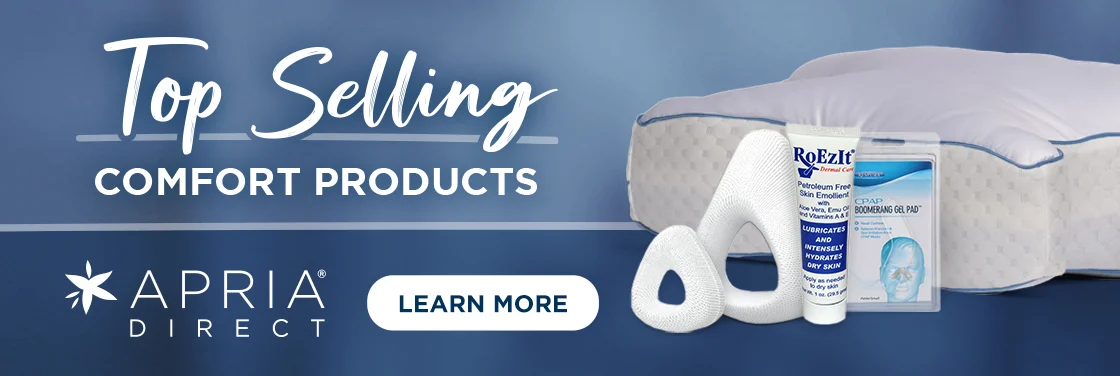ASK APRIA
Today's Clinician

Molly Sidelinger
Molly has been with Apria for 10 years, serving our patients in Maine. She has been a Registered Respiratory Therapist for 11 years and recently began her pre-medicine degree to continue her pulmonology path. She's a mom to 5 boys, who keep her incredibly busy. In her off time Molly enjoys spending time with family and friends, cooking, kayaking, fishing, off-road riding, and bowling with her boys.
CPAP
Q. I wake up with marks on my face from my mask, is there something that can stop that?
A. First I would try adjusting your mask as it may just be too tight. Do you get the marks even with a new mask out of the packaging or have you had to tighten the mask over time because it's started to wear out and now you're waking up with marks? If you've had to tighten the mask over time, you should replace your cushions and headgear.
If you are replacing your supplies regularly, meaning your cushion is being replaced every 2 weeks for nasal mask/nasal pillows or monthly for full face, and you are replacing your headgear every 6 months; you may want to look into a different type of mask. There are newer masks on the market that have that have conduit frames such as Resmed's F30i (full face), N30i (nasal), and P30i (pillows); they are soft and flexible that will help not leave marks on your face.
Another option is to use mask pads or liners, these will provide a barrier between your skin and the mask cushion preventing irritation or friction from your mask.
Q. I’m traveling and have to fly, what am I supposed to do with my CPAP?
A. Bring your CPAP with you. Put your CPAP and ancillary supplies in its original carrying case and carry it on with you. Medical devices are not considered a personal or carry-on item, meaning it won't count toward your carry-on allowance.
For more information: Traveling via airplane with a CPAP.
Q. I use nasal pillows and at first they fit great, but after a few hours they begin leaking, blow air on my face, and it wakes me up. What should I use for nasal pillows to prevent leaks?
A. For the sake of comparison have you tried the other sizes that came with the kit?
If you are using nasal pillows that have a small hose on the front that connects to a larger hose, is there a chance that it is getting pulled in a downward direction? If so, you can try anchoring your larger hose up over your headboard or find a way to place a small hook at the head of your bed to string the hose over. This will allow you to move side to side and not pull the hose downward.
If that doesn't work, I also see a lot of success with the Resmed Airfit P10. There have been newer models to come out that folks seem to like, but I always fall back to the P10. The headgear is adjustable and minimal and the pillows are designed to slightly sit in the nares but more surround the nostrils to seal.
Q. Why do I wake up with a runny nose some mornings and then other mornings not? What would stop the runny nose?
A. Do you notice on the mornings your nose is runny that you haven’t used much water and on the mornings your nose is ok, you have used more water? A runny nose can indicate humidification issues. Make sure that you are putting enough water in your humidifier chamber so that it's up to the max fill line and that you have your humidifier turned on. If those are being done, try increasing your humidification setting by 1.
Also, you will want to make sure you are cleaning any reusable filters regularly and replacing any disposable filters as recommended. Old, dirty filters can cause someone to have symptoms that mimic allergies, i.e. a runny nose, so make sure you're cleaning reusable filters or replacing disposable filters every 2 weeks.
Do you have a question for our Respiratory Therapists to be answered in a future email?
We want to hear from you!


